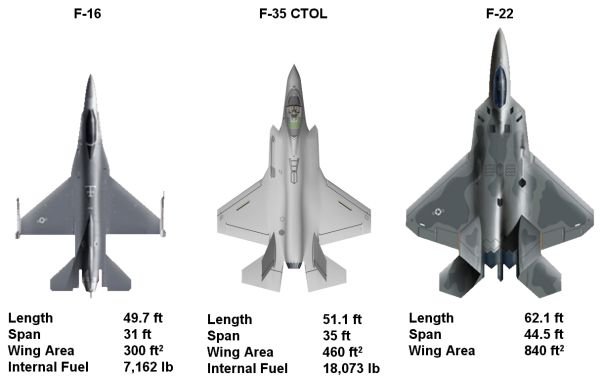the russian news woman looked hot
as the red baron said, "the box matters little."

the russian news woman looked hot
as the red baron said, "the box matters little."

The sticker prices of most Russian aircraft, even the wonder weapons we are supposed to fear, are far less than Western ones. I always wonder whether this is a function of quality or of market reputation. Aren't "cost-plus" contracts only supposed to give a 10% profit margin?
The Russkies will have a hard time fielding this in #s....heres a comparison of the planforms...

Interesting viewing the planform of each aircraft that way. Are they the same scales? If so, the F-35 apprears to be a fair amount smaller.

That's because it is!

Yay, someone mentioned aero-engineering!Or, the F-22 is just giant / Flanker-sized? (48 ft. span by 72 ft. long; 667 sq. ft. wing area; says wiki)
EDIT: that's funny, looked up the T-50 wing area; about the same as an F-22, but the length and span are similar to the Flanker. Must be some aero-engineering phenomenon that makes gargantuan wings useful. Or it could just be the shape...
